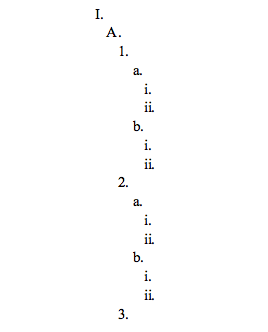Trust me on this, Writer: Having a good map of where your piece is going will make finishing it more efficient. It will save you from frustration and stuckness; your completed first draft will be closer to polished; and you’ll have gotten there much faster.
Different kinds of maps are useful for fiction and non. The traditional tool for non-fiction is the OUTLINE (I wrote that in caps so you can cringe now and get over it.) I’m not sure why that word carries a terror as great as being sent to the principal’s office, but it does for most of my clients.
Even though I went to a progressive elementary school, outlining was taught in seventh grade. Progressive in those days must have meant getting a real world education. That skill was the key to surviving my later education—I don’t have a great memory for detail, but outlining helped me ace every paper I wrote despite exams in the C-range (unless there were essays).
Here are the two benefits of the outline:
- You will have thought through just about everything you need to say, so you won’t get stuck wondering what to say next anywhere in the writing process.
- If you come to a place where you realize you need to do more research, but you’re in a writing mood today, you can pick any place in the outline and start writing there. The outline holds the logical order, so you don’t need to write in the logical order for your content to be logical in the end.
Take your terror to your therapist, but track with me in the meantime. I’m trying to help you. First, throw away your idea that an outline looks like this:
Sorry if I shocked you. Take a deep breath, sense your feet on the floor. I’m trying to titrate the horror.
Here’s my method
1. Take a notebook (no electronic equipment allowed, including phones) and a comfortable writing utensil. (Yes, this is about comfort—remember I promised to make it easy.)
2. Go to a place where you can relax undisturbed – the woods, a beach, a hammock (snoozing is not bad for the process), the outhouse. Let your mind run out of the stories it’s carrying. Walking or meditating are both useful (as is relieving yourself—empty everything).
3. Bring your overall topic into focus.
4. Write down the most important topics you want to cover.
Do not waste time with full sentences, just a few words, so you know what you were thinking about when you come back to this later, so 3 to 7 words should be enough. If you attempt to write full sentences, you’ll likely get stuck looking for the right words for your idea. Stay spontaneous and brief.
Aim for 10 or 15 independent topics
End of Session One
5. Go to your computer and enter each of the topics on a separate line.
Arrange them in logical sequence. To talk about y, I need to introduce x, which requires describing d. That’s the logic of the structure—every idea which is brought in should have all the background introduced first.
You might notice that some ideas are not really independent, but are a subset of others, so put them under the appropriate topic. Add as many more independent topics as continue to come to mind.
If some of the new ideas belong under the major topics, move them there. You’re already into the next phase!
6. Go back to the beach, the woods or the hammock.
Focus on only one of the major topics.
Write down all the primary things you need to present for that topic to be understood.
Do this for each of the major topics.
Enter in the computer and arrange in logical order
7. & 8. Repeat the process for each of the secondary topics, then for each of the tertiary topics. This level of articulation might take several days of contemplation.
By the time you have refined each topic to this fourth level, you are close to having the first sentence of every paragraph of your whole book. And all you’ve done is taken quiet time to think about what you are going to write.
Now you can start thinking about what you should say in the introduction because you have an overview of the entire content of your book in the order of presentation.
What you have created is an outline, though it may not look like the terrifying image you expected.
Along the way you may have realized that you need to do some research to complete your knowledge. If you don’t need that information right away and you are excited about starting to write, follow your impulse. You can wait to do the research until it’s convenient or until you can’t move forward without it.
I hope you realize that your outline is not cast in concrete. If more ideas arise as you write, you can easily add them into your map.
Original article at: http://www.thebookdesigner.com/2011/11/no-stress-outlining/

Leave a Reply